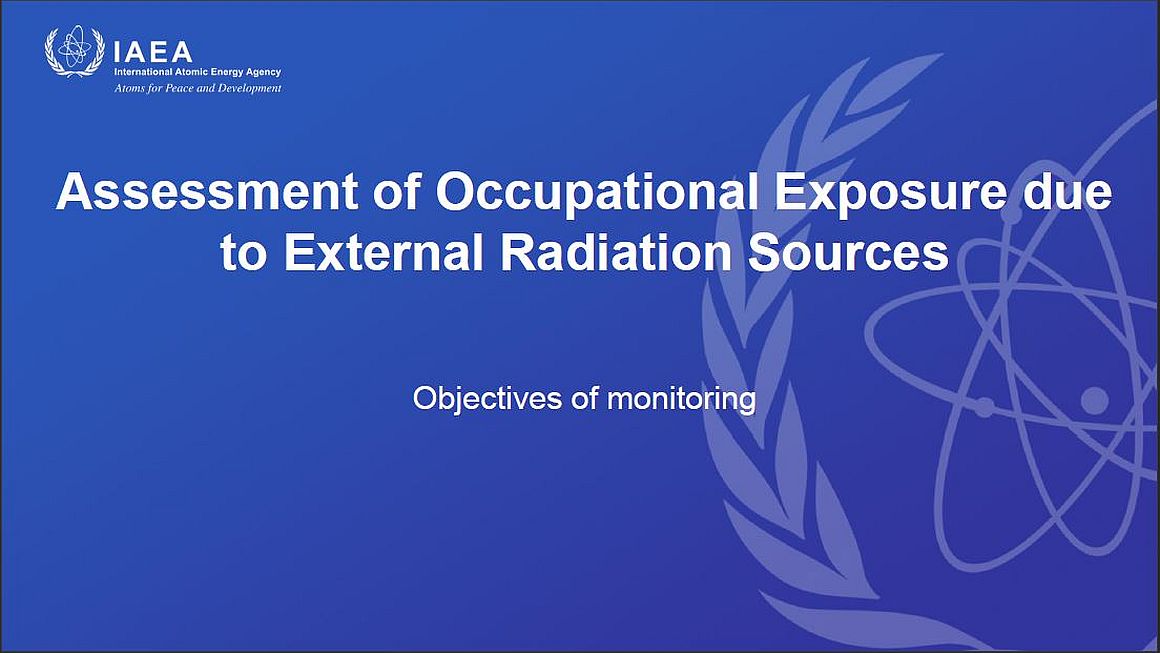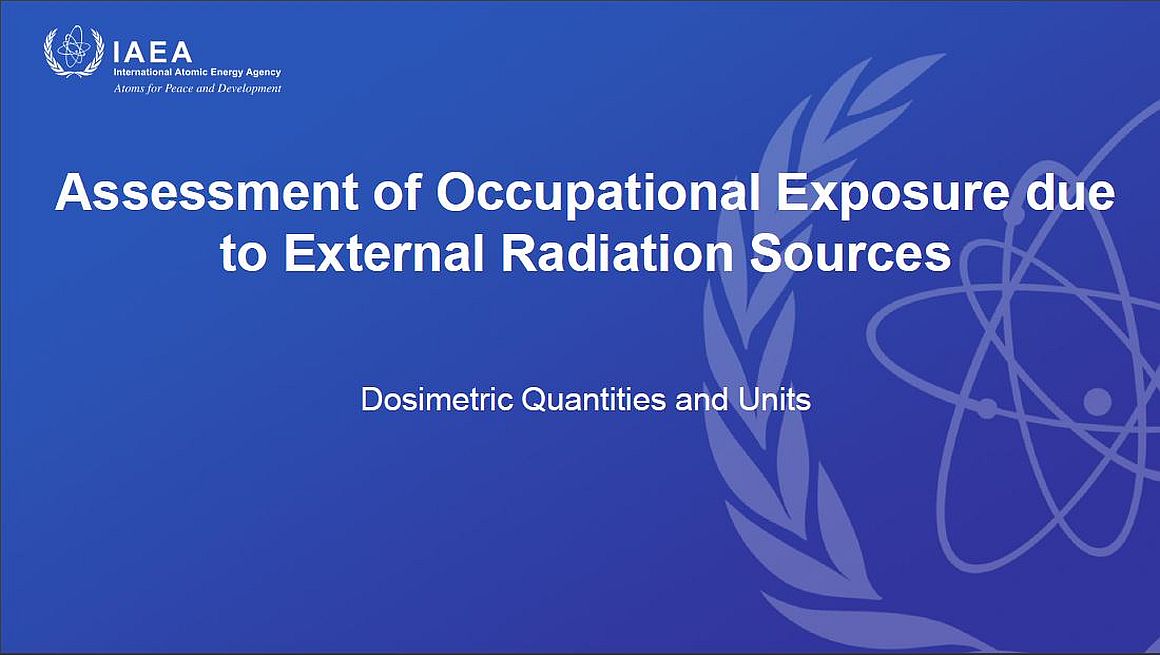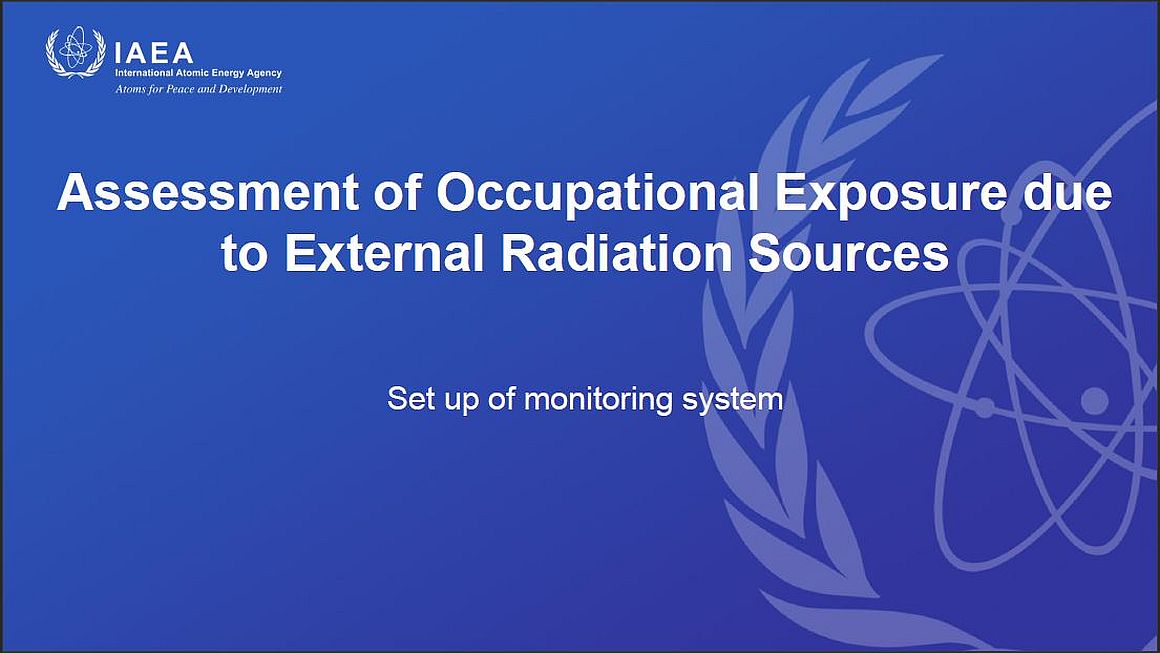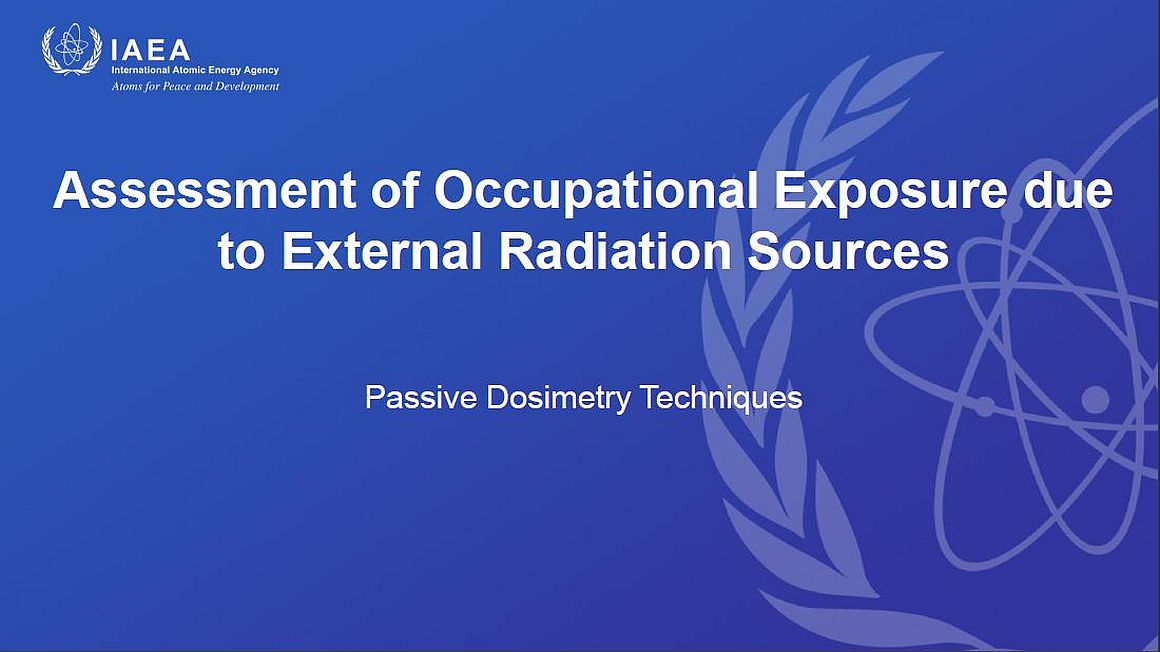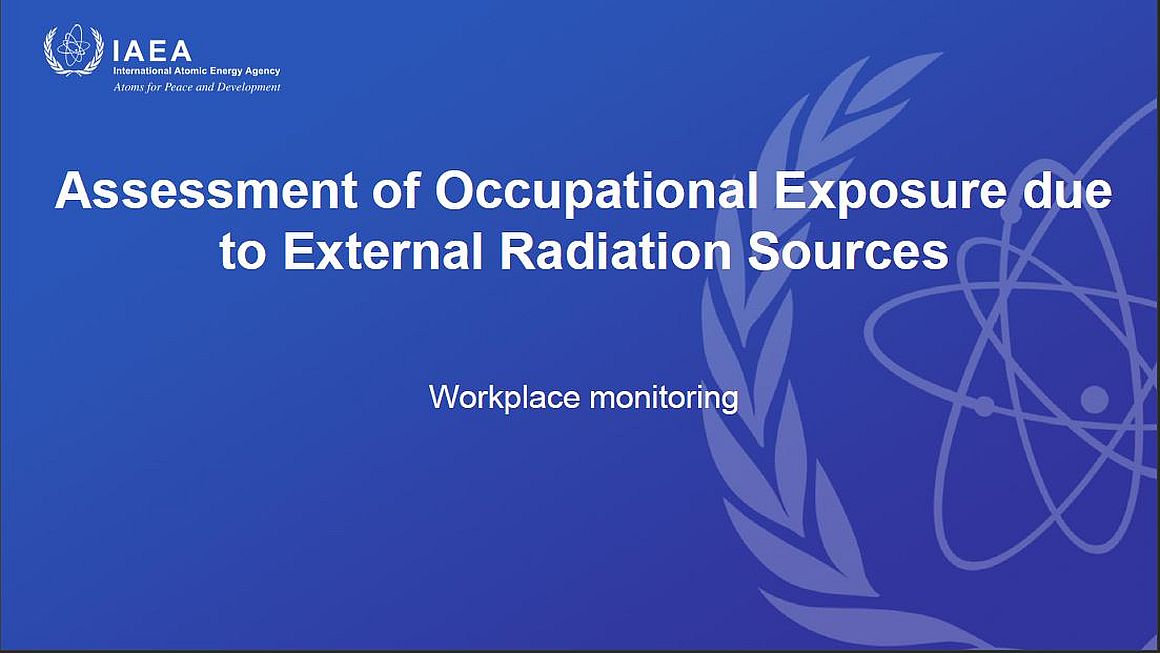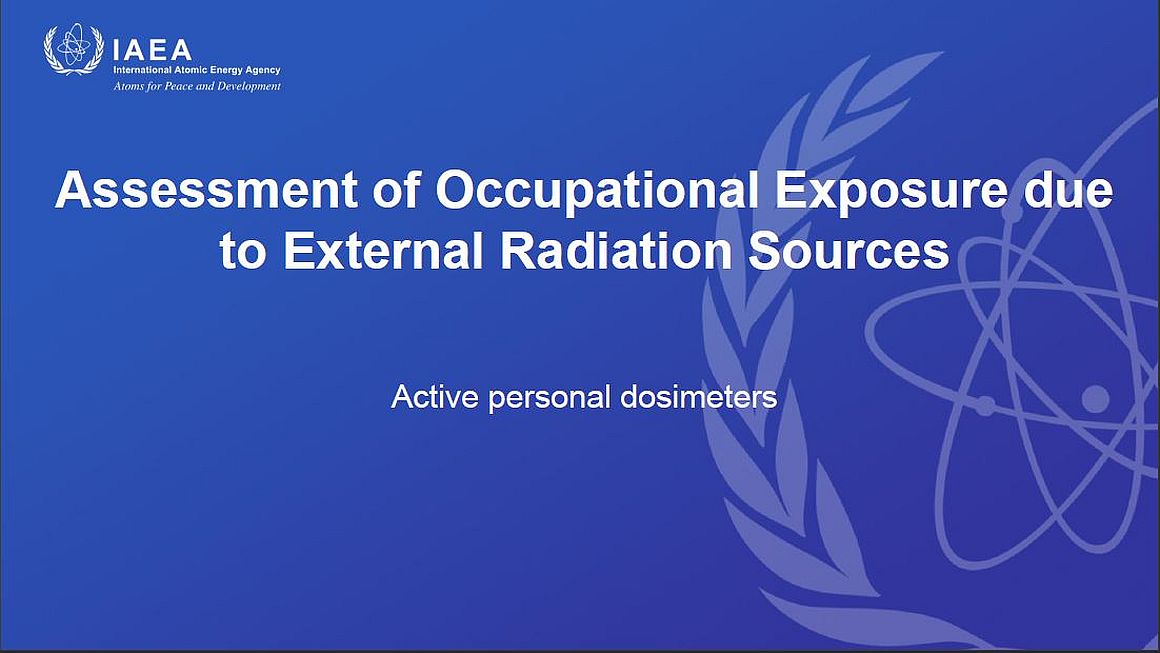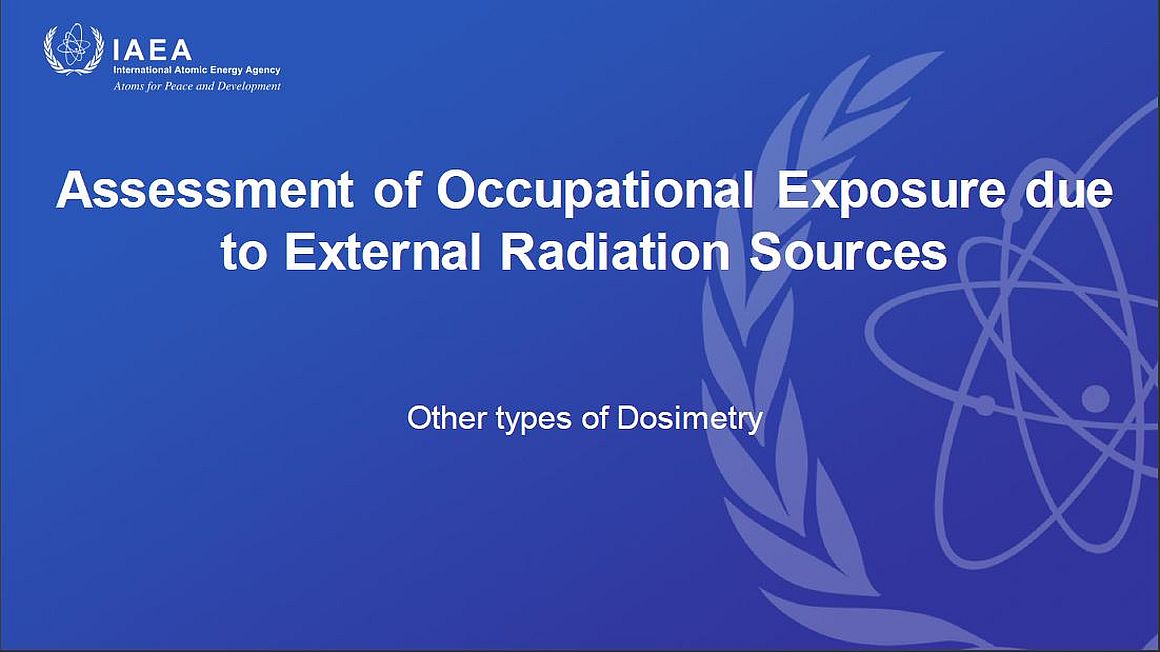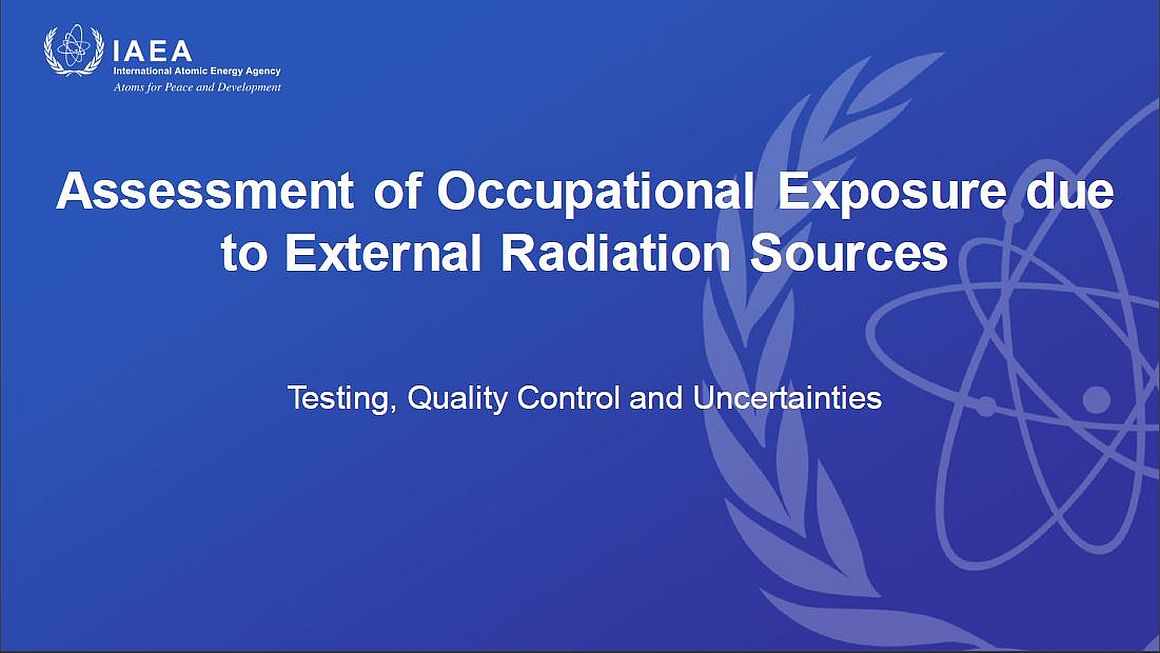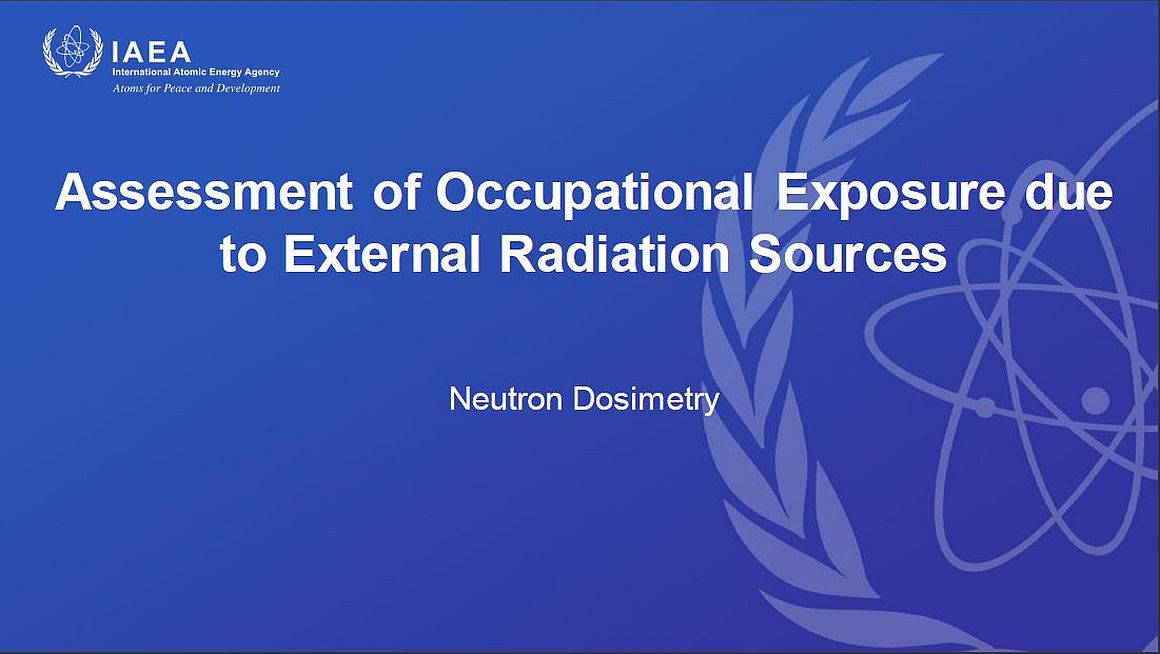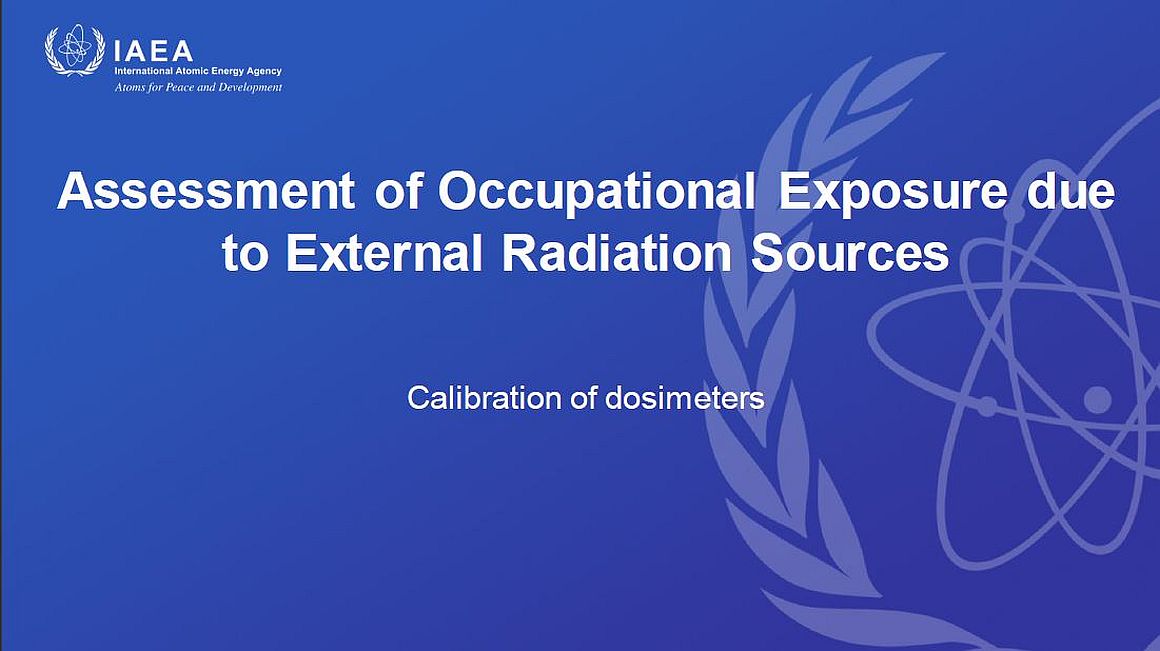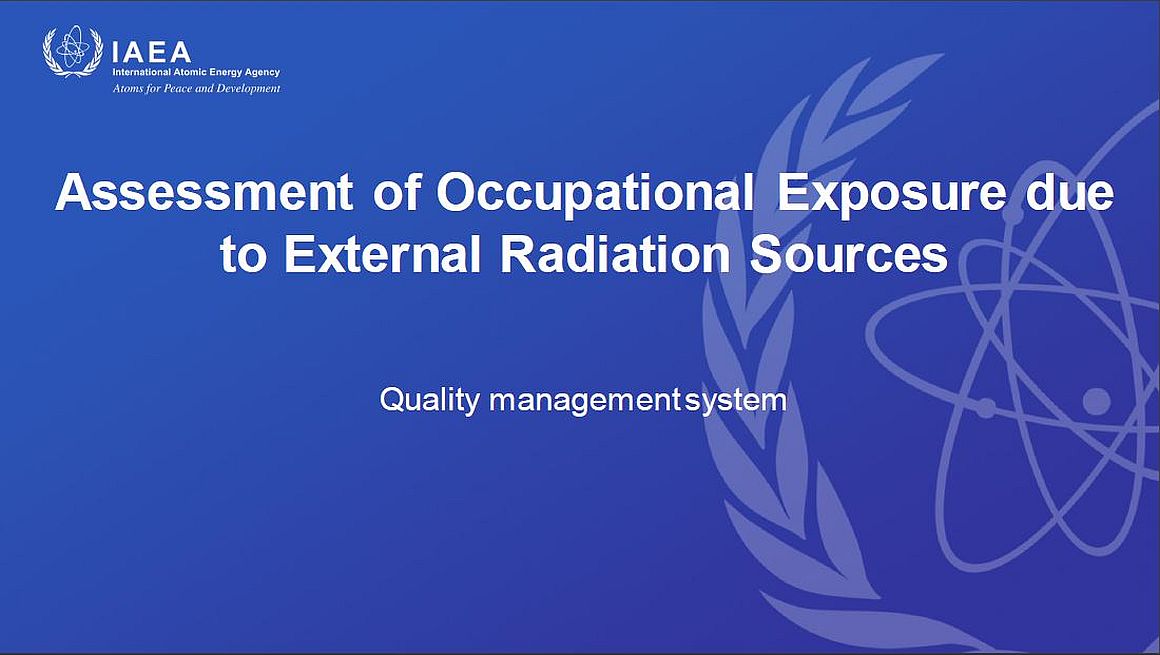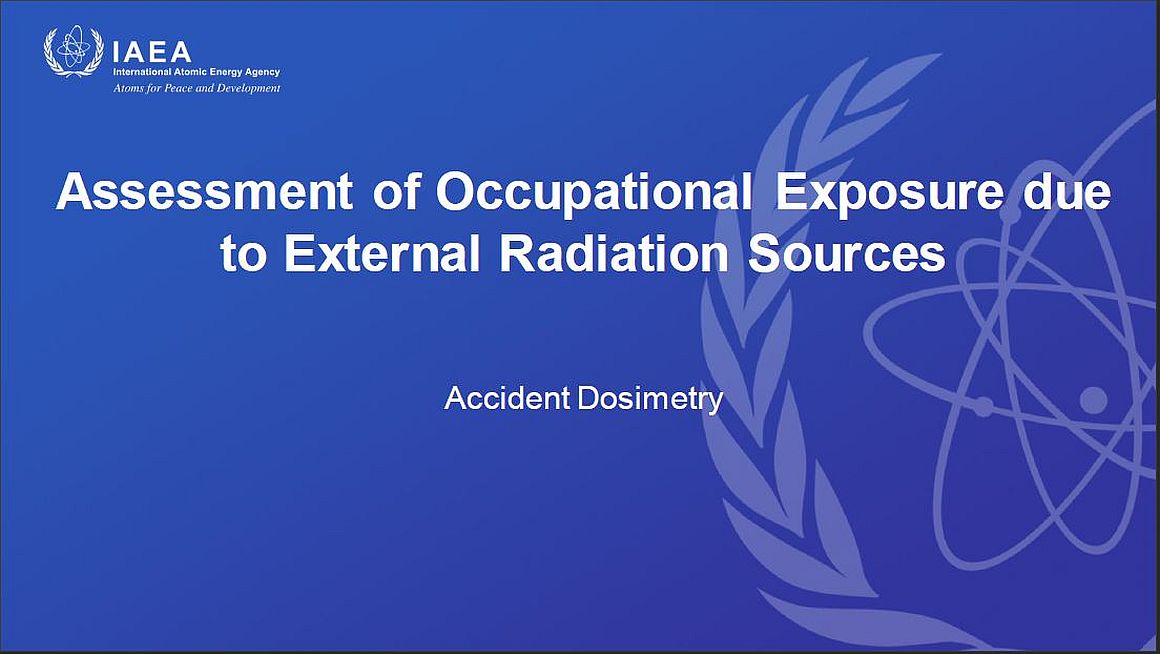Lectures in English
Assessment of Occupational Exposure Due to External Radiation Sources
Requirements for adhering to the IAEA's Fundamental Safety Principles (SF-1) are laid forth in the IAEA's General Safety Requirements. The establishment of requirements for the protections of workers exposed to sources of radiation are found in Radiation Protection and Safety of Radiation Sources: International Basic Safety Standards, General Safety Requirements, No. GSR Part 3. These safety standards establish the need for the monitoring of occupational exposure to external radiation sources for workers.
The IAEA has developed training material on the assessment of occupational exposure due to external radiation sources which covers the objectives, techniques, and evaluation of monitoring radiation exposure. This course is broken into twelve modules that should give users a preliminary understanding of the need and methods used for dose monitoring during normal occupational exposure and accidental exposure scenarios.
Approved training packages may be copied, distributed, displayed, incorporated in customized presentations and used for non-commercial use as long as the source of the material is referenced to the IAEA approved training package.
Training Material
1) Objectives of Monitoring
- Radiation protection and occupational exposure
- Setting up a monitoring system
- When is individual monitoring needed?
- General set up of monitoring for external radiation
2) Dosimetric Quantities and Units
- Physical quantities
- Protection quantities
- Operational quantities
- Relation between quantities: Conversion Coefficients
- Future new operational quantities
3) Set up of Monitoring System
- Build-up of a dosimeter
- Accuracy and detection levels
- Background subtraction
4) Passive Dosimetry Techniques
- Photographic film
- Luminescence
- Thermoluminescence
- Optically stimulated luminescence
- Radiophotoluminescence
- Semiconductors: Direct ion storage
5) Workplace Monitoring
- Workplace monitoring principles
- Workplace monitoring instruments
- Operational monitoring
- Surface contamination monitoring
6) Active Personal Dosimeter
- Purpose of active personal dosimeters (APD)
- Standards for active personal dosimeters
- Where are APD's used?
- Types of APD's
- General APD characteristics
- Specific APD aspects for use in hospitals
7) Other Types of Dosimetry
- Extremity dosimetry
- Eye lens dosimetry
- Double dosimetry
- Aircrew dosimetry
- Need for special dose assessment
8) Testing, Quality Control, and Uncertainties
- Different types of calibrations
- Type testing
- Quality control
- Performance testing and intercomparisons
- Uncertainties
9) Neutron Dosimetry
- Neutron dosimetry: Introduction
- Field instruments for neutrons
- Neutron personal dosimeters
- Characterization of neutron workplace fields
- Examples of neutron dosimetry workplace characterization
10) Calibration of Dosimeters
- Introduction: What is calibration?
- ISO standards on calibration
- Traceability and hierarchy of standards
- Calibration fields and sources
- Practical calibration procedures
11) Quality Management System
- Set-up of an individual monitoring service
- Dose management system and record keeping
- Quality management system
- Accreditation of individual monitoring service
12) Accident Dosimetry
- Assessment of exposure in emergency situations
- Accident dosimetry: Retrospective Techniques
- Skin contamination
- Criticality dosimetry



